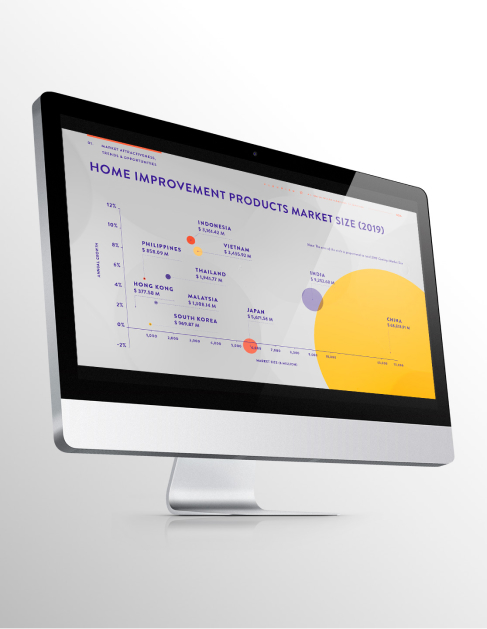Journal
InsightsUnlocking Southeast Asia: Expert Strategies for Navigating Market Diversity and Business Opportunities

Southeast Asia (SEA) is a region of immense diversity, encompassing a mosaic of cultures, languages, and economic landscapes. This diversity presents both opportunities and challenges for businesses seeking to enter or expand in the region – successfully navigating this complexity requires a deep understanding of local consumer behaviours, logistical nuances, and leveraging regional economic integrations such as ASEAN. At Flourish, we tailor strategic approaches to tackle these challenges and capitalize on the unique opportunities presented by SEA’s diverse markets.
Understanding Local Consumer Behaviours
One of the fundamental aspects of succeeding in SEA is understanding that local consumer behaviours vary significantly from one country to another. Consumer preferences, cultural norms, and purchasing power can differ widely even within a single country – for instance, the contrast between urban and rural consumer habits in a country such as Indonesia can be stark.
A report by the Boston Consulting Group (link below) emphasizes the importance of tailoring business strategies to local tastes and preferences. Companies need to conduct thorough market research to identify what appeals to their target audience in each market. This can involve adapting product offerings, marketing messages, and even the brand positioning to resonate with local consumers.
Overcoming Logistical Challenges
Logistics can be a significant hurdle in SEA due to the region's geographic complexity. With over 25,000 islands, Indonesia alone presents a logistical challenge that requires innovative solutions. Efficient supply chain management is crucial to ensure timely delivery of goods and services.
The Asian Development Bank (ADB) highlights the importance of infrastructure development and regional cooperation to address these logistical challenges, suggesting that improvements in transportation networks and trade facilitation are key to enhancing market access. Meanwhile, companies can adopt a multi-hub distribution strategy. By setting up regional hubs in strategic locations, businesses can reduce shipping times and costs, creating local partnerships for last-mile delivery to enhance efficiency and reliability.
Leveraging Regional Economic Integration
The Association of Southeast Asian Nations (ASEAN) plays a pivotal role in fostering economic integration and cooperation among its member states. By reducing trade barriers and harmonizing regulations, ASEAN aims to create a single market and production base. Businesses can leverage these integrations to streamline operations and reduce costs.
Understanding and utilizing ASEAN’s trade agreements can provide companies with competitive advantages. For example, the ASEAN Free Trade Area (AFTA) allows for tariff reductions on intra-ASEAN trade, making it easier for businesses to expand their footprint across the region. Additionally, initiatives like the ASEAN Economic Community (AEC) aim to facilitate the free flow of goods, services, investments, and skilled labour, further enhancing the business environment.

RPM in SEA
Our consultancy’s work with RPM, a company evaluating markets and identifying opportunities in the Asia Pacific (APAC) region, offers valuable insights into navigating market diversity in SEA. RPM approached us to execute a market intelligence and analysis of the existing market for their products in the region.
We conducted a high-level screening of potential partners and manufacturers, and developed a consumer-focused mapping of the coatings market landscape in ten Asian markets, including Hong Kong. This research included insights into customer journey mapping, supplemented with consumer insights, personas, purchasing and usage behaviour, branding and marketing opportunities, route-to-market overviews, and analysis of marketing challenges and directional recommendations.
Our research-based analysis included a comprehensive assessment of market conditions, factoring in macroeconomic indicators, market size for RPM’s brands and products, demographic preferences, and consumer behaviour. This approach ensured that our recommendations were based on a thorough understanding of the market environment. As a result, we were able to guide RPM in identifying strategic partners for key markets and facilitate discussions between relevant stakeholders in the final two markets with the best fit.
Adapting Marketing Strategies
Marketing in SEA requires a tailored approach that considers the diverse cultural and linguistic landscape. Businesses should develop localized marketing campaigns that resonate with the target audience in each country. This includes creating content in local languages, using culturally relevant imagery and messaging, and engaging with local influencers and media channels.
Digital marketing strategies should also be adapted to the varying levels of internet penetration and social media usage across the region. For instance, mobile-first strategies are particularly effective in countries like Indonesia and the Philippines, where mobile internet usage is high.
Building Strong Local Partnerships
Building strong partnerships with local businesses and stakeholders is crucial for success in SEA. Local partners can provide valuable insights into market dynamics, consumer behaviour, and regulatory requirements. They can also help navigate cultural nuances and establish trust with local consumers. Investing in these relationships can lead to long-term success and sustainability. Companies should seek partners who share their values and vision, and work collaboratively to achieve common goals.
Navigating the market diversity in Southeast Asia requires a strategic approach that encompasses understanding local consumer behaviours, overcoming logistical challenges, and leveraging regional economic integrations. Companies that can adapt their strategies to fit the unique contexts of each market stand to gain a competitive edge in this dynamic region. By drawing on insights from think tanks and leveraging successful case studies like RPM, businesses can effectively navigate the complexities of SEA and unlock its vast potential.
Read more:
Boston Consulting Group: Southeast Asia Consumer Sentiment and Behavior.
https://www.bcg.com/publications/2023/asean-consumer-sentiment-studyTechnological Advancements: Innovations across infrastructure sectors.
https://southeastasiainfra.com/technological-advancements-innovations-across-infrastructure-sectors/PWC: A Summary of South East Asian Infrastructure Spending – Outlook to 2025.
https://www.pwc.com.au/asia-practice/publications/pwc-a-summary-of-south-east-asian-infrastructure.pdf


